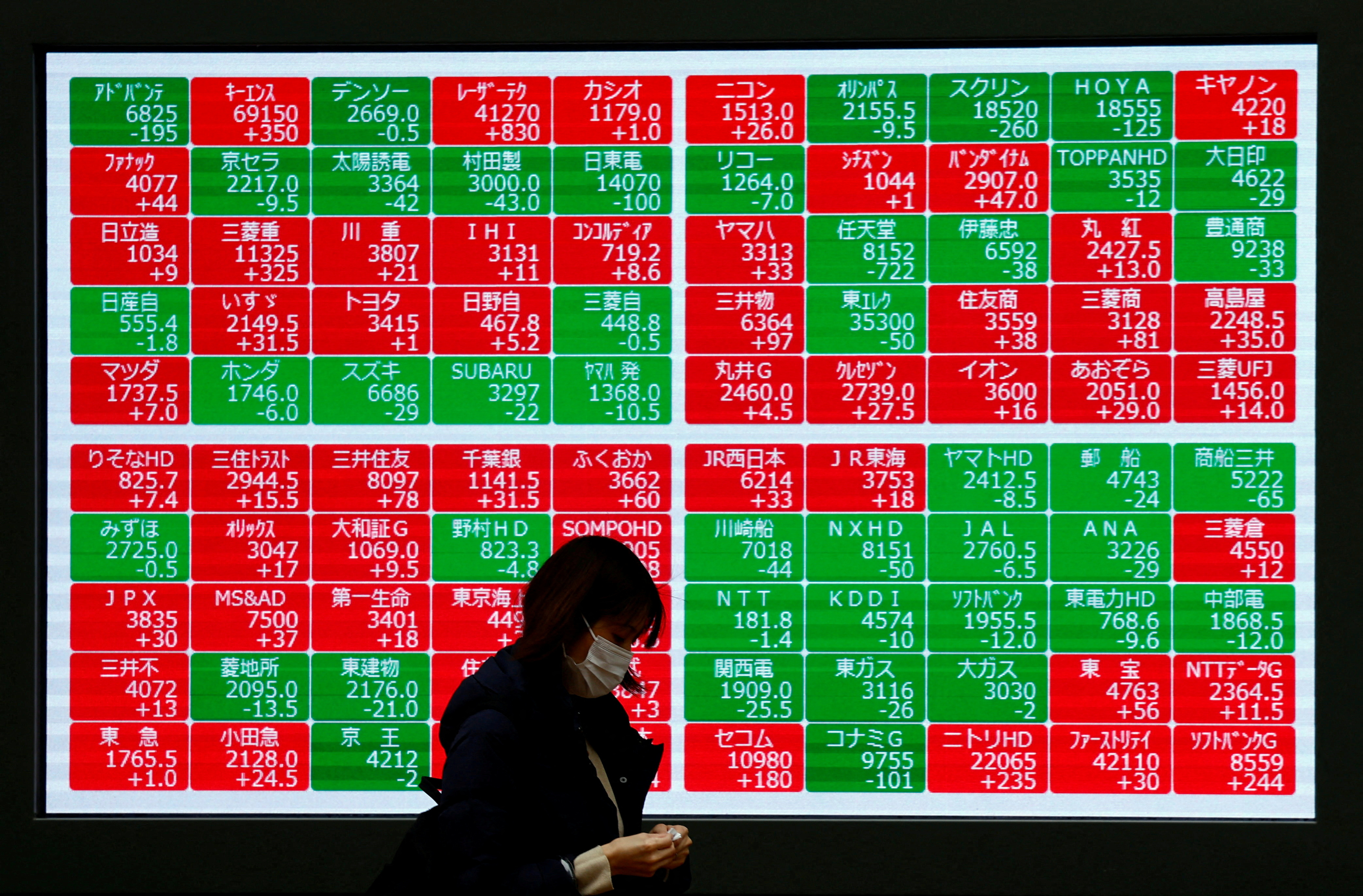
Before retiring, a recent Manhattan district attorney said he would not prosecute people who jump subway turnstiles to avoid paying fares because this is a crime of poverty.
Before retiring, a recent Manhattan district attorney said he would not prosecute people who jump subway turnstiles to avoid paying fares because this is a crime of poverty. A retired New York police chief responded with a challenge: Find a turnstile jumper who does not possess a smartphone. Remember this item (from Heather Mac Donald’s 2023 book “When Race Trumps Merit”) during cloudy election-year campaign rhetoric about the nature and importance of economic inequality.
In more than 50 years, government transfer payments (Medicaid, food stamps, etc.) to the average household in the bottom quintile of earners, have risen (in inflation-adjusted dollars) from $9,700 to $45,000 annually.
In more than 50 years, government transfer payments (Medicaid, food stamps, etc.) to the average household in the bottom quintile of earners, have risen (in inflation-adjusted dollars) from $9,700 to $45,000 annually. Why, then, does the government, which is substantially staffed by progressives, use — actually, abuse — statistics to suggest the futility of progressive anti-poverty policies? Because this provides a permanent rationale for government growth: perpetual undiminished poverty.
In their 2022 book “The Myth of American Inequality: How Government Biases Policy Debate,” Phil Gramm, Robert Ekelund and John Early demonstrate gross defects in the Census Bureau’s measurement of inequality.
In their 2022 book “The Myth of American Inequality: How Government Biases Policy Debate,” Phil Gramm, Robert Ekelund and John Early demonstrate gross defects in the Census Bureau’s measurement of inequality. By not counting about 88 percent of government transfer payments that enlarge the buying power of lower-income households, and not counting taxes that lower the wealth of higher-income households, government statistics purport to prove that the average income in the top quintile of earners is 16.7 times that of the average in the bottom quintile. Counting transfers and taxes, however, the actual ratio is 4 to 1. Which is unsurprising, given this:
In 2017, 40 percent of the $2.8 trillion in transfer payments distributed by federal, state and local governments went to the bottom 20 percent of income households, and 68 percent to the bottom 40 percent of households.
In 2017, 40 percent of the $2.8 trillion in transfer payments distributed by federal, state and local governments went to the bottom 20 percent of income households, and 68 percent to the bottom 40 percent of households. Eighty-two percent of the $4.4 trillion Americans paid in all taxes came from the two most affluent quintiles. And allowing for transfers and taxes, the average household income in the lowest quintile is only 8 percent less than the average in the second lowest, and only 24 percent less than in the middle quintile.
Furthermore, counting transfers and taxes erases this absurd government statistic: Households in the bottom quintile spend twice as much as they reportedly earn.
Furthermore, counting transfers and taxes erases this absurd government statistic: Households in the bottom quintile spend twice as much as they reportedly earn. William Voegeli, writing in the Claremont Review of Books, where he is senior editor, suggests a thought experiment:
Suppose every household’s inflation-adjusted income increased 3.53 percent annually for 20 years, which would double each family’s buying power but not reduce income inequality.
Suppose every household’s inflation-adjusted income increased 3.53 percent annually for 20 years, which would double each family’s buying power but not reduce income inequality. Surely it would be perverse to say there had been no progress making society better and fairer.
Income inequality is not the sovereign determinant of equity, because income sufficiency matters.
Income inequality is not the sovereign determinant of equity, because income sufficiency matters. But some progressives favor defining the poverty rate as the bottom third of income recipients, forever. Then there could be a “war on poverty,” forever. Such thinking explains why 1 in 8 Americans get food stamps.
Economist Pierre Lemieux, writing in the Cato Institute’s journal Regulation, says that in 2017, 44 percent of all households had real (inflation-adjusted) incomes that 50 years earlier were earned only by those in the top 20 percent.
Economist Pierre Lemieux, writing in the Cato Institute’s journal Regulation, says that in 2017, 44 percent of all households had real (inflation-adjusted) incomes that 50 years earlier were earned only by those in the top 20 percent. “Recall,” he says, “that real wages increased by 74 percent over the past 50 years and the real median household income nearly doubled.”
Amid increased attention to income inequality, the populist right — “national conservatives” — and the progressive left favor “industrial policy” that regressively funnels money upward to corporations.
Amid increased attention to income inequality, the populist right — “national conservatives” — and the progressive left favor “industrial policy” that regressively funnels money upward to corporations. The populist right advocates protectionism (tariffs to shield corporations from competition), and the populist left advocates hundreds of billions of dollars of subsidies (for semiconductors, electric vehicles, solar panels, etc.).
Yet Americans remain stubbornly exceptional.
Yet Americans remain stubbornly exceptional. A November report from the European Research Council addresses a phenomenon vexing to progressives: Why does a six-country opinion survey (Australia, France, Germany, Switzerland, the United Kingdom and the United States) reveal the United States as uniquely resistant to media narratives that inequality is the result of systemic unfairness (the villainous rich victimizing the masses) and that this requires energetic government redistribution?
Their twofold answer is that Americans, rejecting the left’s equation of fairness with equality, are incorrigibly optimistic about individual effort being rewarded by the market with high social mobility: Many Americans often regard inequality as evidence of upward mobility.
Their twofold answer is that Americans, rejecting the left’s equation of fairness with equality, are incorrigibly optimistic about individual effort being rewarded by the market with high social mobility: Many Americans often regard inequality as evidence of upward mobility. And Americans are more pessimistic than other nations’ populations about government performing efficiently.
A third reason might be
SDGs, Targets, and Indicators Analysis
1. Which SDGs are addressed or connected to the issues highlighted in the article?
- SDG 1: No Poverty
- SDG 8: Decent Work and Economic Growth
- SDG 10: Reduced Inequalities
The article discusses poverty, economic inequality, and government policies related to these issues, which are directly connected to SDG 1 (No Poverty), SDG 8 (Decent Work and Economic Growth), and SDG 10 (Reduced Inequalities).
2. What specific targets under those SDGs can be identified based on the article’s content?
- SDG 1.2: By 2030, reduce at least by half the proportion of men, women, and children of all ages living in poverty in all its dimensions according to national definitions.
- SDG 8.5: By 2030, achieve full and productive employment and decent work for all women and men, including for young people and persons with disabilities, and equal pay for work of equal value.
- SDG 10.1: By 2030, progressively achieve and sustain income growth of the bottom 40 percent of the population at a rate higher than the national average.
The article highlights the need to address poverty and reduce income inequality. The targets mentioned above are relevant to these issues.
3. Are there any indicators mentioned or implied in the article that can be used to measure progress towards the identified targets?
- Indicator 1.2.1: Proportion of population living below the national poverty line, by sex and age.
- Indicator 8.5.1: Average hourly earnings of female and male employees, by occupation, age group, and persons with disabilities.
- Indicator 10.1.1: Growth rates of household expenditure or income per capita among the bottom 40 percent of the population and the total population.
The article discusses poverty rates, income levels, and inequality measures, which can be used to track progress towards the identified targets. The indicators mentioned above can help measure these aspects.
Table: SDGs, Targets, and Indicators
| SDGs | Targets | Indicators |
|---|---|---|
| SDG 1: No Poverty | 1.2: By 2030, reduce at least by half the proportion of men, women, and children of all ages living in poverty in all its dimensions according to national definitions. | 1.2.1: Proportion of population living below the national poverty line, by sex and age. |
| SDG 8: Decent Work and Economic Growth | 8.5: By 2030, achieve full and productive employment and decent work for all women and men, including for young people and persons with disabilities, and equal pay for work of equal value. | 8.5.1: Average hourly earnings of female and male employees, by occupation, age group, and persons with disabilities. |
| SDG 10: Reduced Inequalities | 10.1: By 2030, progressively achieve and sustain income growth of the bottom 40 percent of the population at a rate higher than the national average. | 10.1.1: Growth rates of household expenditure or income per capita among the bottom 40 percent of the population and the total population. |
Behold! This splendid article springs forth from the wellspring of knowledge, shaped by a wondrous proprietary AI technology that delved into a vast ocean of data, illuminating the path towards the Sustainable Development Goals. Remember that all rights are reserved by SDG Investors LLC, empowering us to champion progress together.
Source: washingtonpost.com

Join us, as fellow seekers of change, on a transformative journey at https://sdgtalks.ai/welcome, where you can become a member and actively contribute to shaping a brighter future.






